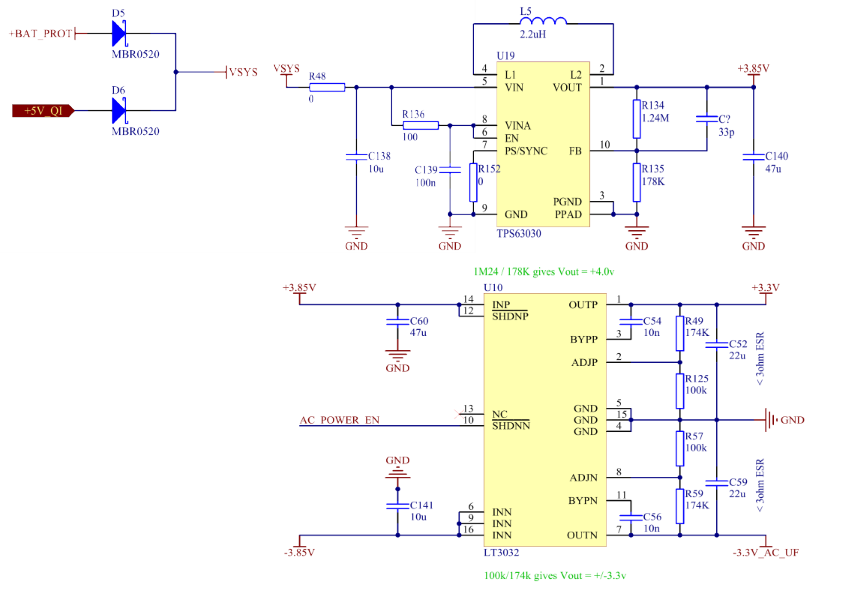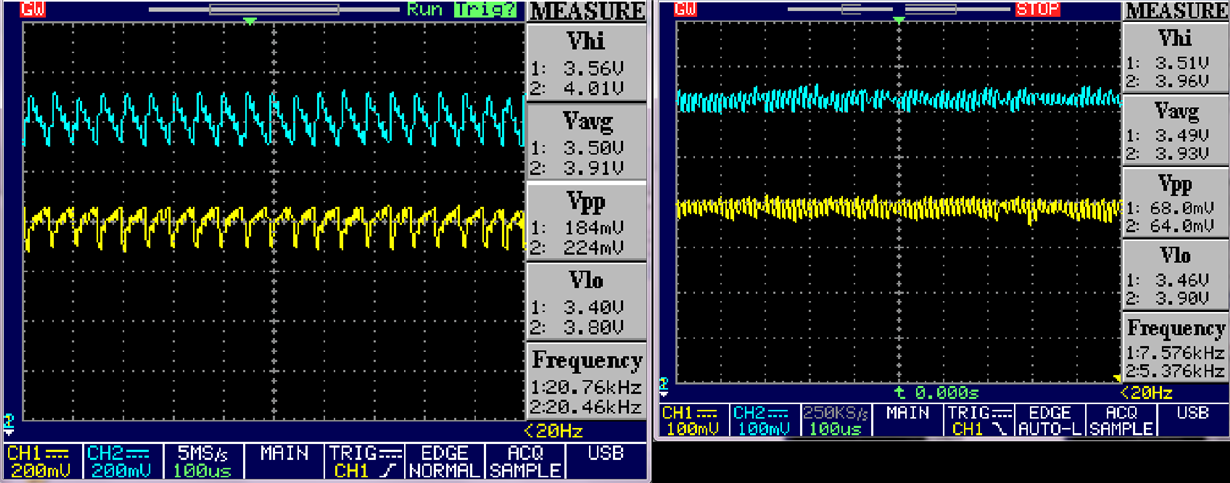Can someone tell me if this is normal behavior?
I am using a TPS63030 to generate 1.9V from a 1.8V - 3.2V (2 AA alkalines) supply. Here is my circuit:
The layout is very well done, with solid ground connections, a ground plane under the circuitry, a solid ground connection to the power pad, very short traces, and the entire layout area is ~0.3" x 0.3".
The TPS63030 operates in BUCK MODE with Vin between 3.2V and 2.6V. Here are the switching waveform and the output ripple at 2.6V 62mA in, 1.9V out:
The TPS63030 operates in BOOST MODE with Vin between 2.1V and 1.8V (UVLO point). Here are the switching waveform and the output ripple at 2.1V 97mA in, 1.9V out:
The TPS63030 operates in MIXED MODE with Vin between 2.6V and 2.1V. Here are the switching waveforms (each side of inductor) and the output ripple at 2.3V 87mA in, 1.9V out:
"BUCK" side
"BOOST" side:
Output ripple:
The increased noise level and the varying nature of the BUCK-to-BOOST transitions is creating speaker noise in the audio circuit that is powered by this converter.
Is this something that I will just have to filter out, or is there some way of adjusting the circuit to eliminate this excess noise in the BUCK-to-BOOST transition zone?
Thanks in Advance,
Ed





